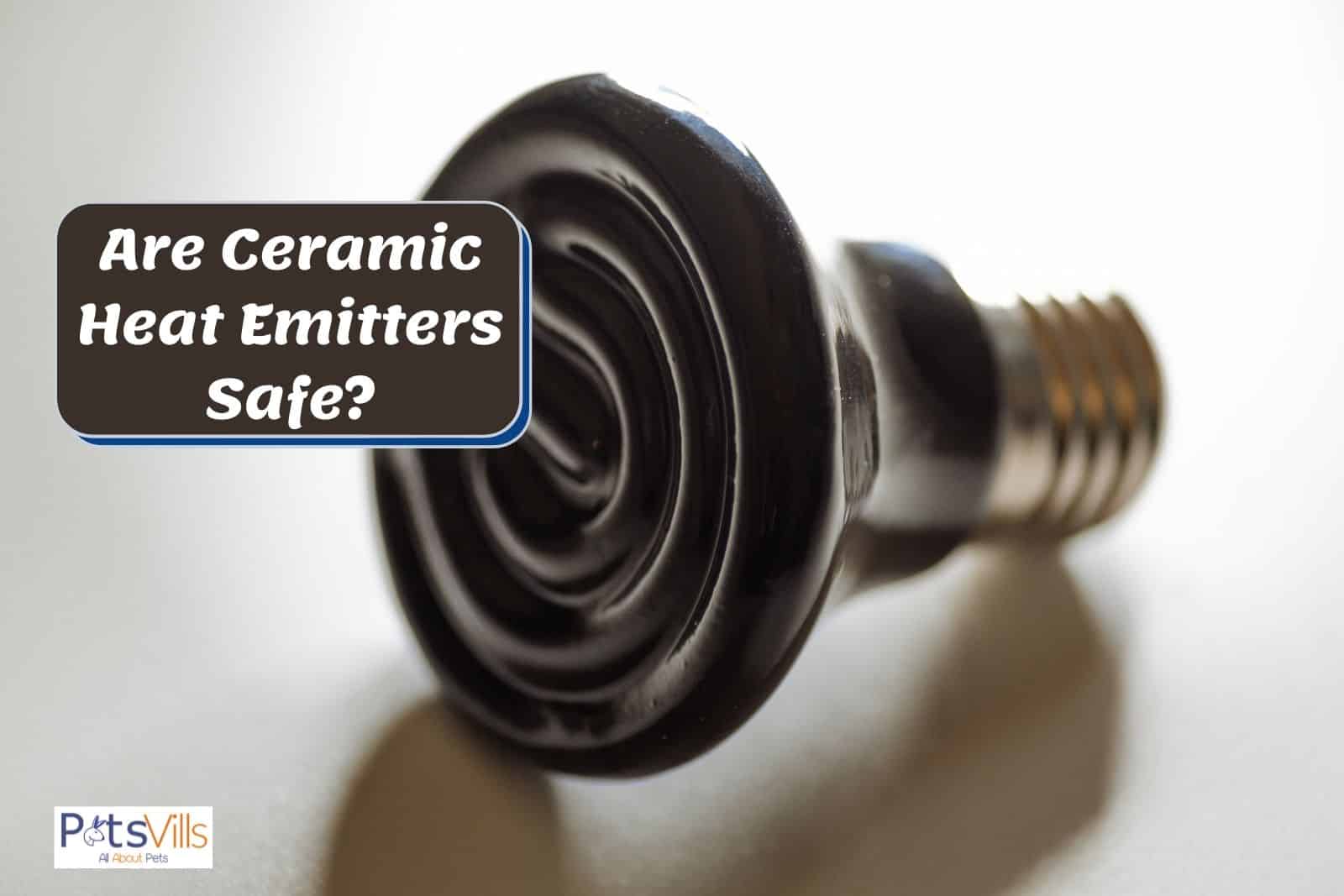Ceramic heat bulbs are safe to use as long as they are used according to the manufacturer’s instructions. These bulbs emit infrared radiation, which is absorbed by the body and can lead to increased blood circulation and a deep, relaxing heat sensation. When used properly, ceramic heat bulbs are an effective and safe way to enjoy the benefits of infrared therapy.
There has been some debate about whether ceramic heat bulbs are safe to use. Some people argue that they can release harmful chemicals into the air, while others say that they are perfectly safe. So, what is the truth?
Are ceramic heat bulbs safe? The answer is yes! Ceramic heat bulbs are made from clay and other minerals, so they are completely natural and pose no health risks.
In fact, many people believe that ceramic heat bulbs actually improve air quality by releasing negative ions into the air which help to purify it.
How Hot Do Ceramic Heat Bulbs Get
Ceramic heat bulbs are one of the most popular types of heat lamps on the market. They emit a steady, even heat that is perfect for keeping reptiles and other animals warm. But just how hot do ceramic heat bulbs get?
The answer depends on the wattage of the bulb. A 40-watt ceramic heat bulb will generate a temperature of around 95 degrees Fahrenheit, while a 100-watt bulb will reach temperatures upwards of 150 degrees Fahrenheit. So if you’re looking to create a warm environment for your reptile friend, make sure to choose the right size ceramic heat bulb!
What is a Ceramic Heat Emitter
A ceramic heat emitter is a type of electrical heating element. It consists of a coil of resistive wire that is wrapped around a ceramic core. The ceramic core acts as a heat sink, allowing the heat to be conducted away from the coil and into the surrounding air.
Ceramic heat emitters are used in a wide variety of applications, including space heaters, hair dryers, and industrial ovens. They are prized for their high efficiency and long life span. However, they can be fragile and require careful handling.
Ceramic Heat Emitter Vs Basking Bulb
One of the most common questions we get here at Reptiles by Mack is what type of heat source is best for my reptile? There are a variety of opinions out there and often people will swear by one heat source or another. In this blog post, we’ll take a close look at two of the most popular types of heat sources – ceramic heat emitters (CHEs) and basking bulbs – to help you make an informed decision about which is best for your reptile.
Ceramic Heat Emitters:
Ceramic heat emitters (CHEs) are a type of infrared heating element that emits waves of long-wavelength infrared radiation. This infrared radiation is absorbed by your reptile’s body, causing it to feel warm.
CHEs are very efficient at converting electrical energy into heat, making them one of the most popular choices for reptile heating elements. However, they do not produce visible light, so if you’re looking for a basking spot for your reptile, you’ll need to combine CHE with another light source such as a basking bulb or LED light.
Basking Bulbs:
Basking bulbs are incandescent bulbs that produce both visible light and infrared radiation. The combination of these two wavelengths makes basking bulbs an ideal choice for creating a warm basking spot for your reptile. Basking bulbs come in a variety of wattages depending on the size of your enclosure and the needs of your reptile, so be sure to choose the correct bulb for your setup.
One downside to basking bulbs is that they can be less energy-efficient than other types of heat sources since much of the electrical energy is converted into visible light instead ofheat.
Do Ceramic Heat Emitters Need a Thermostat
Ceramic heat emitters are a type of infrared heater that can be used for a variety of applications, including heating your home or office. They work by emitting infrared radiation, which is then absorbed by objects in the room, raising their temperature.
One question that we often get asked about ceramic heat emitters is whether or not they need to be used with a thermostat.
The answer is yes and no – it depends on the application. For example, if you are using the heater to supplement your main heating system, then you will likely want to use a thermostat so that you can control the temperature more precisely. However, if you are using the ceramic heat emitter as your primary heating source, then you may not need a thermostat since the heater will automatically cycle on and off as needed to maintain the desired temperature.
So there you have it – whether or not you need to use a thermostat with your ceramic heat emitter depends on how you are using it. If you have any further questions about this topic, feel free to give us a call or send us an email and we’d be happy to help out.

Credit: petsvills.com
How Long Can You Leave a Ceramic Heat Lamp On?
Ceramic heat lamps are a type of infrared heat lamp. Infrared heat lamps emit electromagnetic radiation that is absorbed by objects in their path, warming them up. Ceramic heat lamps have a coating of ceramic material on the bulb that helps to emit this radiant heat.
Most ceramic heat lamps have a power rating of 250 watts or less and can be left on for long periods of time without over heating the area they are providing warmth to. It is important to note, however, that ceramic heat lamps should not be left unattended as they can pose a fire hazard if not used properly.
Can You Leave a Ceramic Heat Emitter on All the Time?
Ceramic heat emitters are a type of infrared heat lamp. Infrared heat lamps are a safe, efficient way to provide heat for your reptiles. They can be left on all the time without any problems.
Are Ceramic Heat Bulbs Better?
There are a few different types of heat bulbs that are used for reptiles, including ceramic heat bulbs. So, which type of heat bulb is the best?
Ceramic heat bulbs emit infrared radiation, which is absorbed by the reptile’s body and helps to increase the animal’s internal temperature.
These bulbs are more expensive than traditional incandescent bulbs, but they last much longer – up to 10,000 hours! In addition, ceramic heat bulbs do not produce any light, so they will not disturb your reptile’s sleep cycle.
One downside of ceramic heat bulbs is that they can be fragile and break easily.
If you choose to use a ceramic heat bulb, be sure to purchase a quality product from a reputable manufacturer. Also, make sure to follow the instructions carefully when installing the bulb.
Is Ceramic Heat Safe?
Ceramic heat is a safe and efficient way to heat your home. Ceramic heaters use infrared waves to generate heat, which is then transferred to the surrounding air. This type of heating is very efficient and does not produce any harmful emissions.
Conclusion
Are Ceramic Heat Bulbs Safe?
You may have seen ceramic heat bulbs in infrared saunas or heat lamps at the doctor’s office, and wondered if they are safe. The short answer is yes, ceramic heat bulbs are safe.
Here’s a more detailed look at why ceramic heat bulbs are safe and how they work.
Ceramic heat bulbs emit infrared radiation, which is a type of electromagnetic radiation. Infrared radiation is invisible to the human eye but we can feel it as heat.
All objects emit infrared radiation, including our bodies. In fact, we need infrared radiation to stay warm!
Ceramic heat bulbs just emit more infrared radiation than other objects do.
When you’re in an infrared sauna or under a heat lamp, you’re exposed to this extra infrared radiation and your body temperature rises. This can have some health benefits, like easing muscle pain or increasing blood circulation.
So overall, ceramic heat bulbs are perfectly safe for most people to use.
Just be sure to follow any safety instructions that come with the product you’re using them with.
